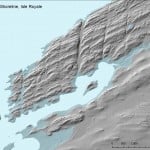 12:00 noon on Friday, November 21th in AOB 201.
12:00 noon on Friday, November 21th in AOB 201.
Seth DePasqual, NPS Cultural Resource Manager for Isle Royale National Park, will be presenting on “Where’s the Beach? Revisiting the Archaic Along Isle Royale’s Relict Nipissing Shoreline”
 12:00 noon on Friday, November 21th in AOB 201.
12:00 noon on Friday, November 21th in AOB 201.
Seth DePasqual, NPS Cultural Resource Manager for Isle Royale National Park, will be presenting on “Where’s the Beach? Revisiting the Archaic Along Isle Royale’s Relict Nipissing Shoreline”
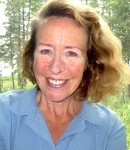 Nancy Langston, professor of environmental history and social sciences, will be speaking about the Binational Forum’s work in the Lake Superior Basin at the FOLK annual meeting on Wednesday, November 19th. Langston is a member of the Great Lakes Research Center and the Binational Forum.
Nancy Langston, professor of environmental history and social sciences, will be speaking about the Binational Forum’s work in the Lake Superior Basin at the FOLK annual meeting on Wednesday, November 19th. Langston is a member of the Great Lakes Research Center and the Binational Forum.
The presentation will take place at the Portage Lake District Library at 6 p.m. Both the meeting and the presentation are open to the public. Refreshments will be served.
From Tech Today.
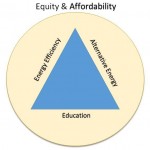 Four MTU graduate students have authored an energy plan for Houghton County, which is a quarter-finalist in the national competition for the Georgetown University Energy Prize of $5 million. The prize challenges participating communities to tap their imagination, creativity, and spirit of competition and work together with their local government and utilities toward a shared goal of reducing their consumption of gas and electricity.
Four MTU graduate students have authored an energy plan for Houghton County, which is a quarter-finalist in the national competition for the Georgetown University Energy Prize of $5 million. The prize challenges participating communities to tap their imagination, creativity, and spirit of competition and work together with their local government and utilities toward a shared goal of reducing their consumption of gas and electricity.
Houghton County’s plan, which was submitted on November 10th, focuses on energy efficiency improvements driven by community outreach efforts. The authors were Brad Barnett, Edward Louie & Brent Burns, all graduate students in the Department of Social Sciences and Abhilash Kantamneni, a graduate student in the Department of Computer Science. Earlier drafts of the plan were reviewed by Professor Barry Solomon and Assistant Professor Richelle Winkler, and received significant community input through multiple public meetings. Winkler has also been a facilitator for the Houghton County Energy Efficiency Team (HEET), which is a community organization working with local utilities, public officials, and community organizations to help local residents save energy and reduce costs. There are currently 52 teams in the competition, and the winner will be announced in 2017.
For more information on HEET’s efforts, review the Houghton County energy plan, and to learn how you can get involved visit: http://houghtonenergyefficiency.com/
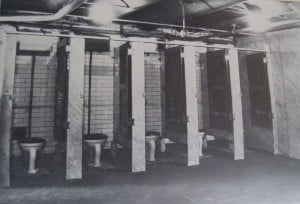 12:00 noon on Friday, November 14th in AOB 201.
12:00 noon on Friday, November 14th in AOB 201.
Laura Walikainen Rouleau, Ph.D. will be presenting on “Private Spaces in Public Places: Public Restrooms at the Turn of the Twentieth Century”.
Abstract: At the turn of the twentieth century, urbanization, industrialization, and immigration combined to draw Americans out of the private realm of the home and into public spaces. As more people spent long hours in public, they required spaces to cleanse, relieve, and clothe their bodies. In order to accommodate these bodies in public, several spaces emerged at the boundary of the public and the private.
The public restroom, as an example of these boundary spaces, was a site of confluence for issues of the body, space, and privacy in American society at the turn of the twentieth century. In order to become acceptable, these “public comfort stations” were designed to create a sense of privacy in public. This study interrogates the relationship between the physical and social construction of these sites by examining the materiality of these spaces, the bodies and activities that enlivened them, and the society that shaped them. Public restrooms were segregated by gender and race, and these spaces were “classed” as customers were often required to pay to use them. The design, creation, and regulation of these early restrooms reveal how privacy was experienced and defined at this moment of emergence.
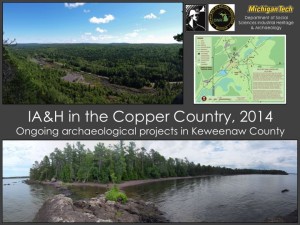 12:00 noon on Friday November 7 in AOB 201. Sean Gohman, PhD candidate, Eric Pomber, MS student, and Adrian Blake, MS student will present on”Industrial Heritage and Archaeology in the Copper Country, 2014″.
12:00 noon on Friday November 7 in AOB 201. Sean Gohman, PhD candidate, Eric Pomber, MS student, and Adrian Blake, MS student will present on”Industrial Heritage and Archaeology in the Copper Country, 2014″.
Abstract: Join Industrial Heritage and Archaeology students Sean Gohman, Eric Pomber, and Adrian Blake as they discuss their involvement in two field projects undertaken this summer in Keweenaw County. In May and June, Gohman, Pomber, and Blake continued an ongoing mapping project at the Cliff mine, with a new series of interpretive maps the result. These maps document the rise and fall of an historic mining landscape currently the focus of environmental remediation. These maps are evidence of the evolving nature of mining’s impact on the land, as well as speak to the decisions of mining companies as they tackle illusive mineral deposits and accommodate the domestic needs of their workforce.
In July, the team conducted a Phase II survey of property belonging to Ft. Wilkins, in Copper Harbor. Several features associated with some of the earliest recording mining in the area were documented and in some cases excavated. These features expand the physical bounds of the park’s mission, and offer new interpretive possibilities for the park going forward.
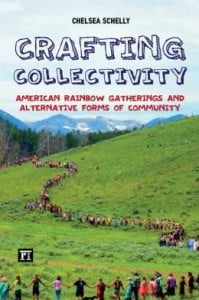 12:00 noon on Friday, October 31 in AOB 201.
12:00 noon on Friday, October 31 in AOB 201.
Dr. Chelsea Schelly, Assistant Professor of Sociology, Social Sciences will be presenting on “The Rainbow Way: Participation and Experience in Rainbow Gathering Culture”
Her talk is based on her recently published book, Crafting Collectivity: American Rainbow Gatherings and Alternative Forms of Community (Paradigm Publishers).
opportunities, and educational experiences distinct to this creative social world. The Rainbow Family has invented itself as a unique modern culture without formal organization, providing the necessities of life freely to all who attend. The Annual Gathering of the Rainbow Family has been operating for more than forty years as an
experiment in liberty that demonstrates how material or-ganization, participation, and cultural connection can reshape social relationships and transform individual lives. Grounded in sociological theory and research, the book considers what kind of culture the material systems of “Babylon” reinforce and how society could facilitate the kind of social world and human welfare humans desire.
From Tech Today.
Richelle Winkler (SS) and Jay Meldrum (Keweenaw Research Center) were quoted in the recent article “Abandoned Michigan Mineshafts Could Be New Energy Option” in Midwest Energy News.
Abstract:
“Mineshaft geothermal” is gaining attention here as researchers investigate the energy potential stored hundreds of feet below the ground. The water in these abandoned and flooded mines, which expand throughout the U.P., is just now starting to be used to heat and cool buildings.
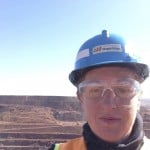 12:00 noon on Friday, October 24 in AOB 201. Melissa Baird, Assistant Professor of Anthropology, Social Sciences will present, “Mining is Our Heritage: Corporate Discourse and the Politics of Extraction“.
12:00 noon on Friday, October 24 in AOB 201. Melissa Baird, Assistant Professor of Anthropology, Social Sciences will present, “Mining is Our Heritage: Corporate Discourse and the Politics of Extraction“.
The Pilbara Coast of Western Australia serves as a touchstone to examine how global mining industries are mobilizing the language of heritage, indigenous rights, and sustainability in their conceptions of heritage and through their corporate and social responsibility campaigns. I present preliminary insights that point to the urgency in making clear the competing claims and tracing the varied agendas of global institutions, corporations, the nation-state, and stakeholders. How exactly is heritage and the language of indigenous rights being used in claim-making and how do new iterations of corporate conceptions of heritage intersect with the rights and lands of indigenous peoples?
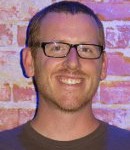 12:00 noon on Friday October 17 in AOB 201. John Baeten, PhD student in Industrial Heritage and Archaeology, will present on “The Nature of Taking Things Apart: Industrial Disassembly, Where the Sum of the Parts are Greater Than the Whole“.
12:00 noon on Friday October 17 in AOB 201. John Baeten, PhD student in Industrial Heritage and Archaeology, will present on “The Nature of Taking Things Apart: Industrial Disassembly, Where the Sum of the Parts are Greater Than the Whole“.
The process of industrial disassembly in the United States, seen in facilities such as slaughterhouses, created a shift in the interaction between humans and their environment. This shift was evident in the increasing scales of production, a consolidation of ownership, and a centralization of processing within theses centers of disassembly. Industrial disassemblers capitalized not only on the scale and speed from which they functioned, but also on the lower land rents of the hinterland from where they produced their animate commodities. This paper introduces a new model for interpreting the technological system of disassembly, and examines the environmental and social impacts of taking things apart.